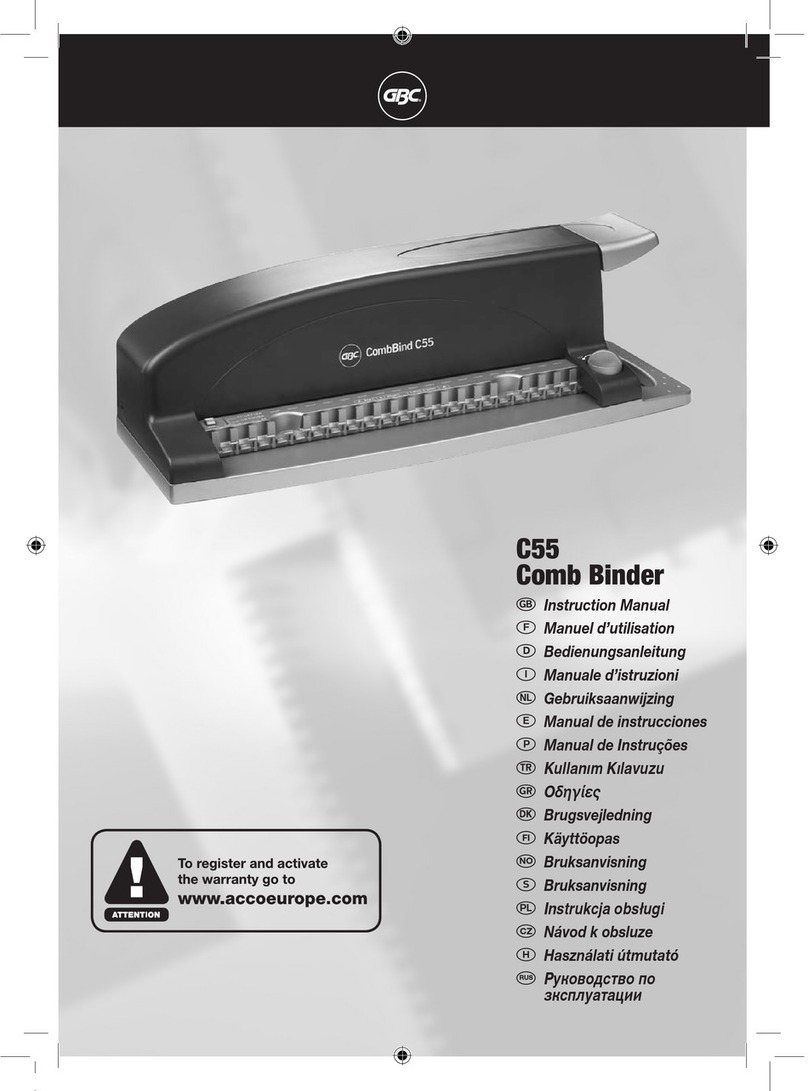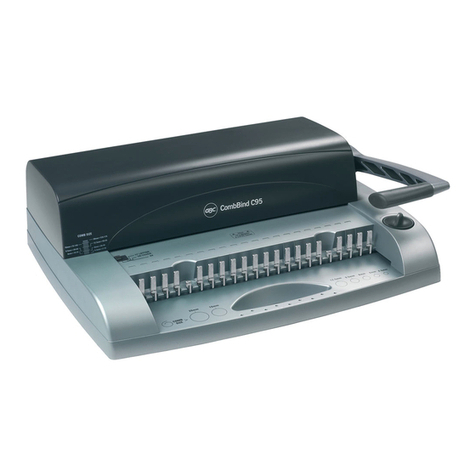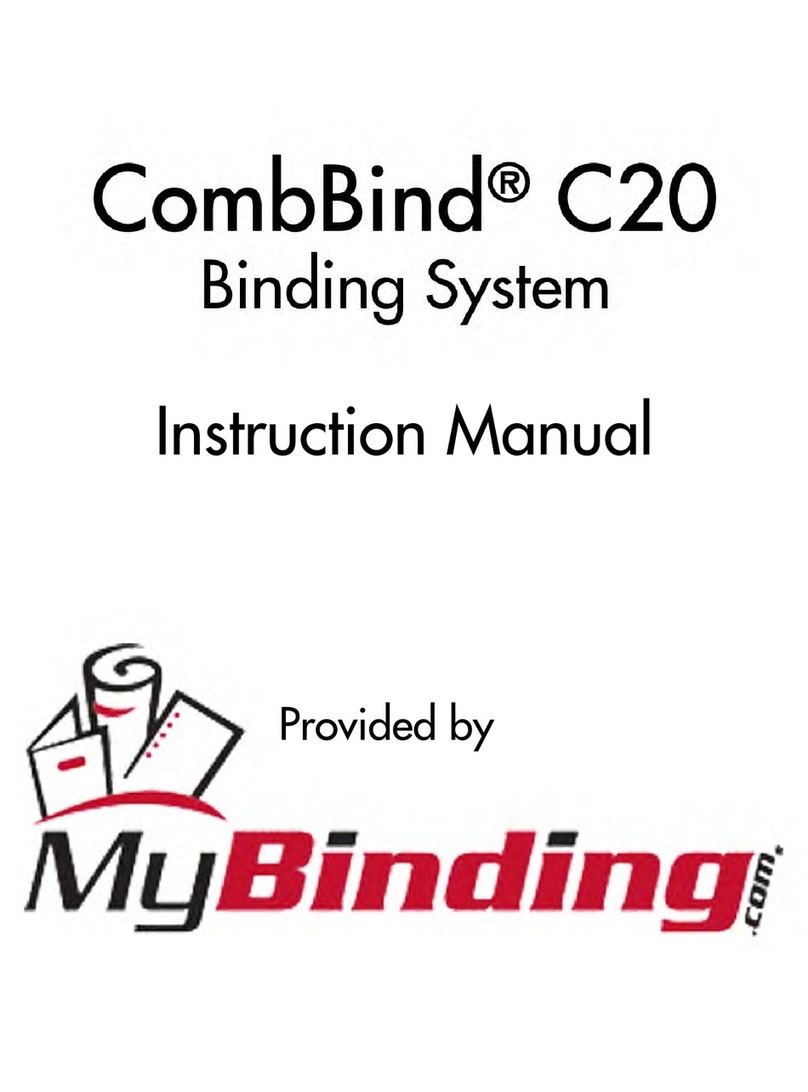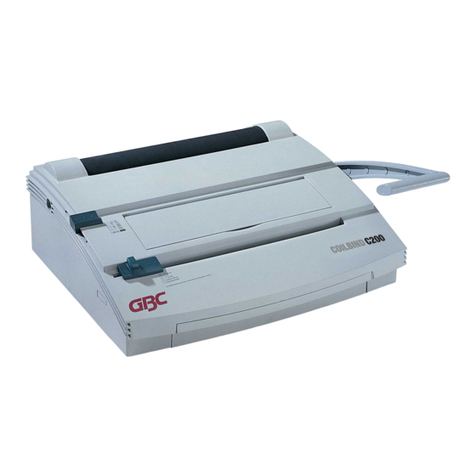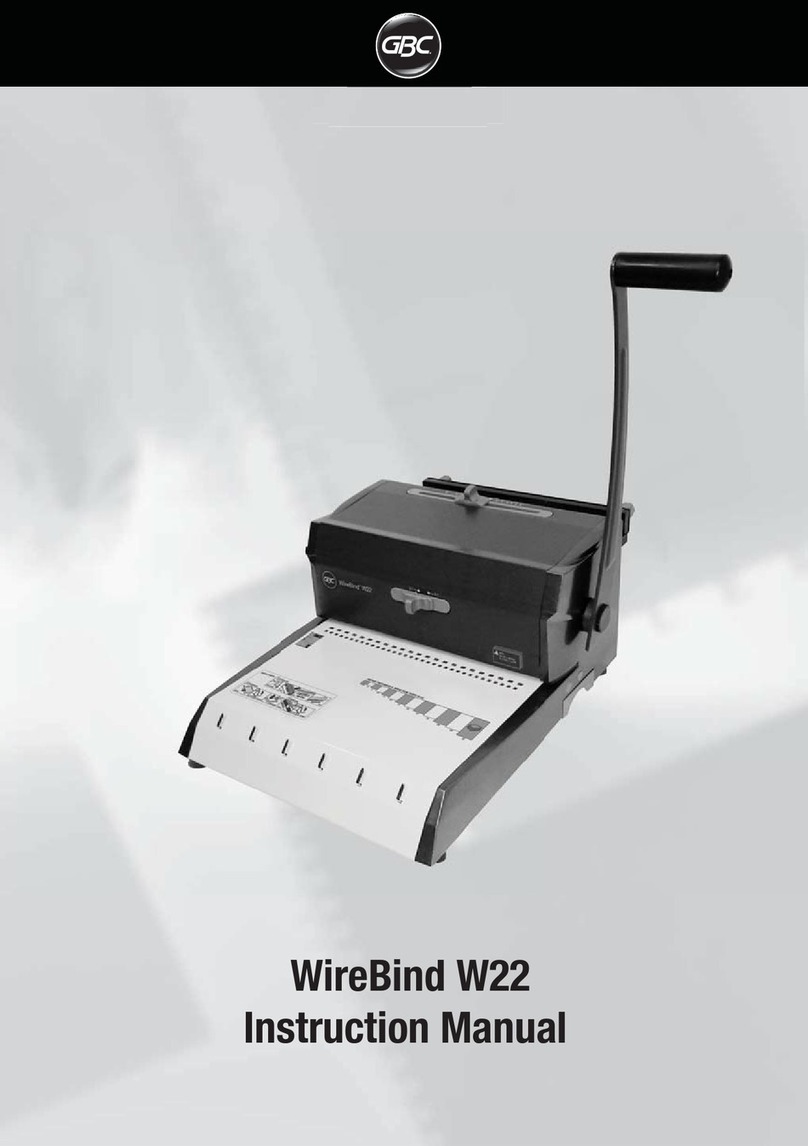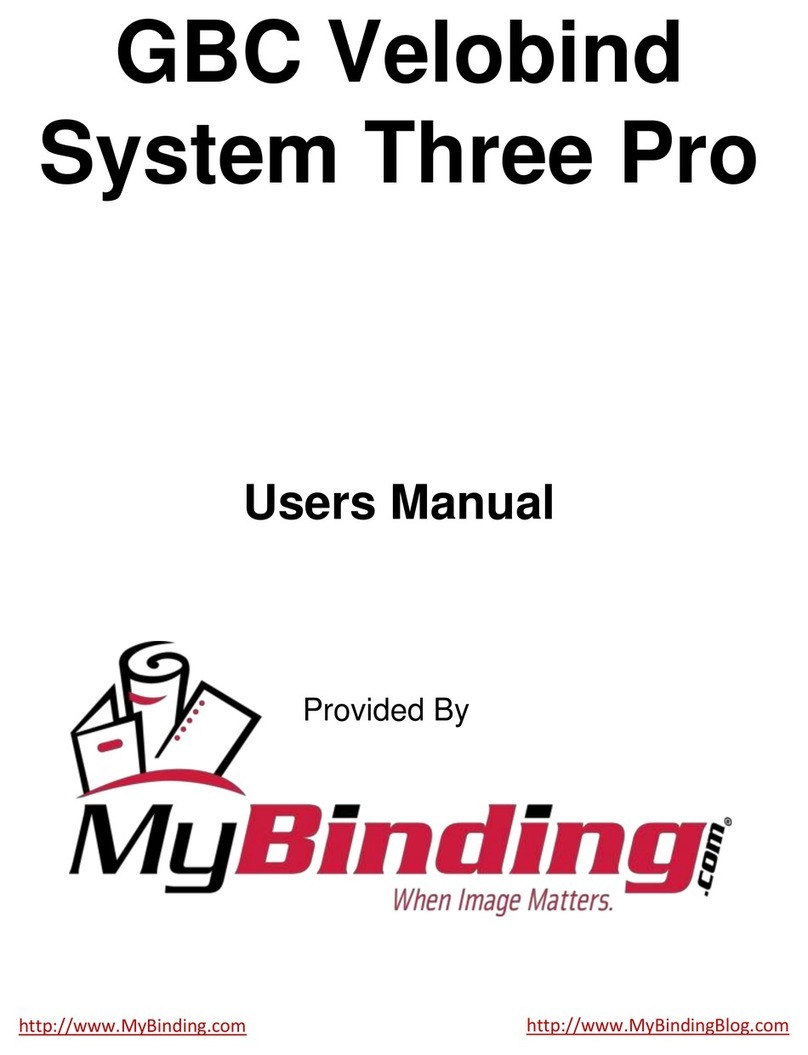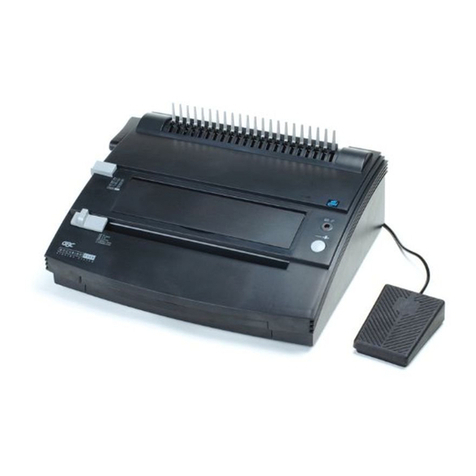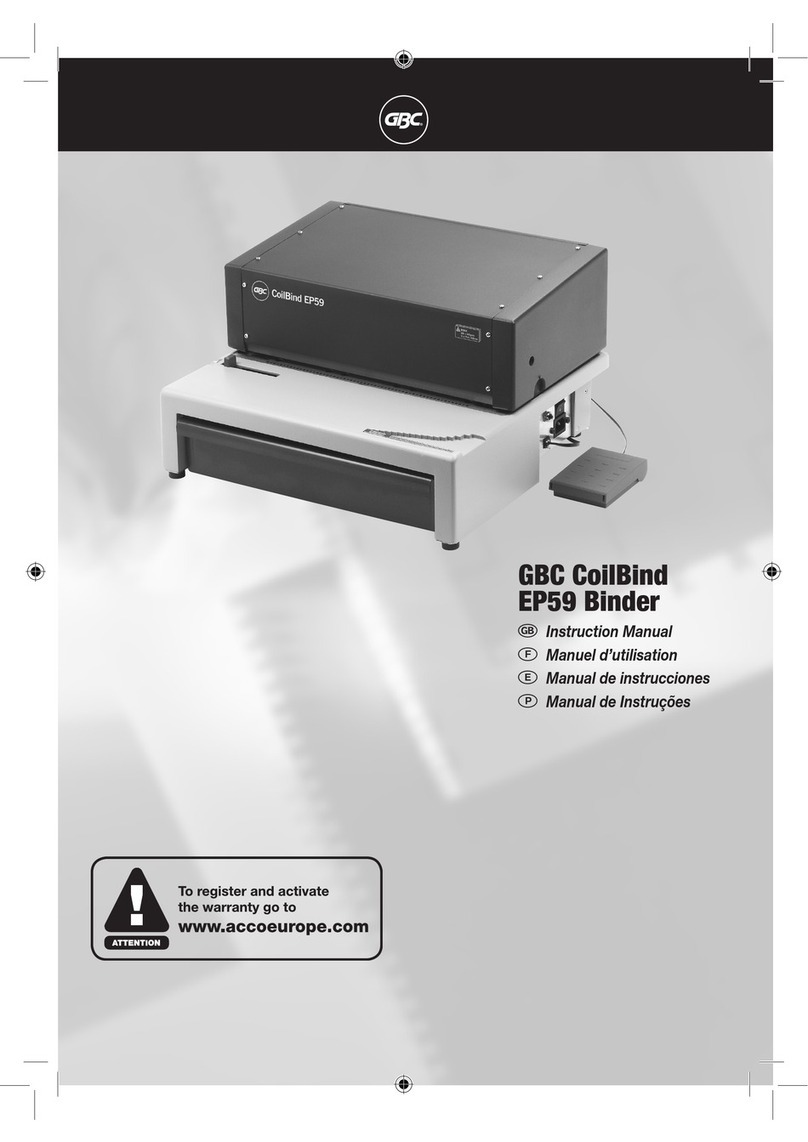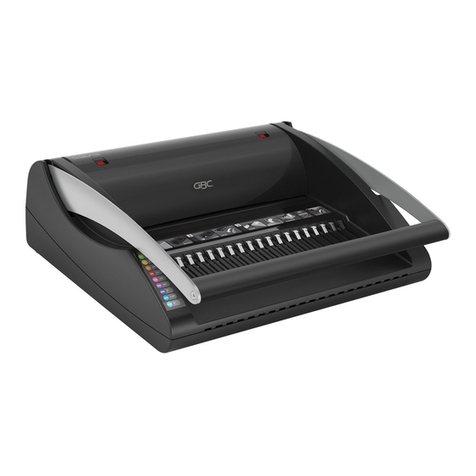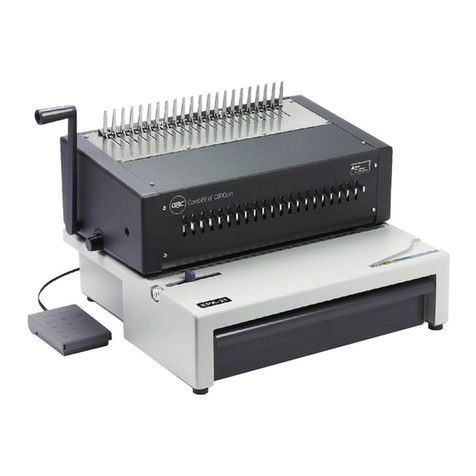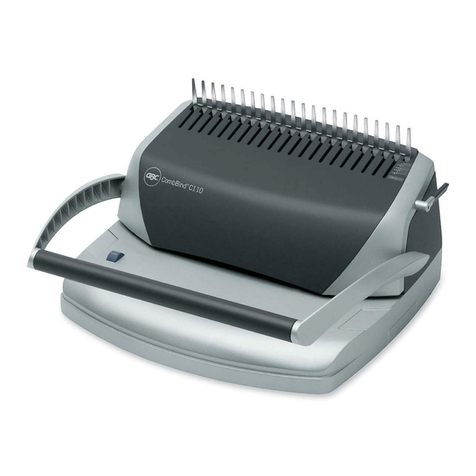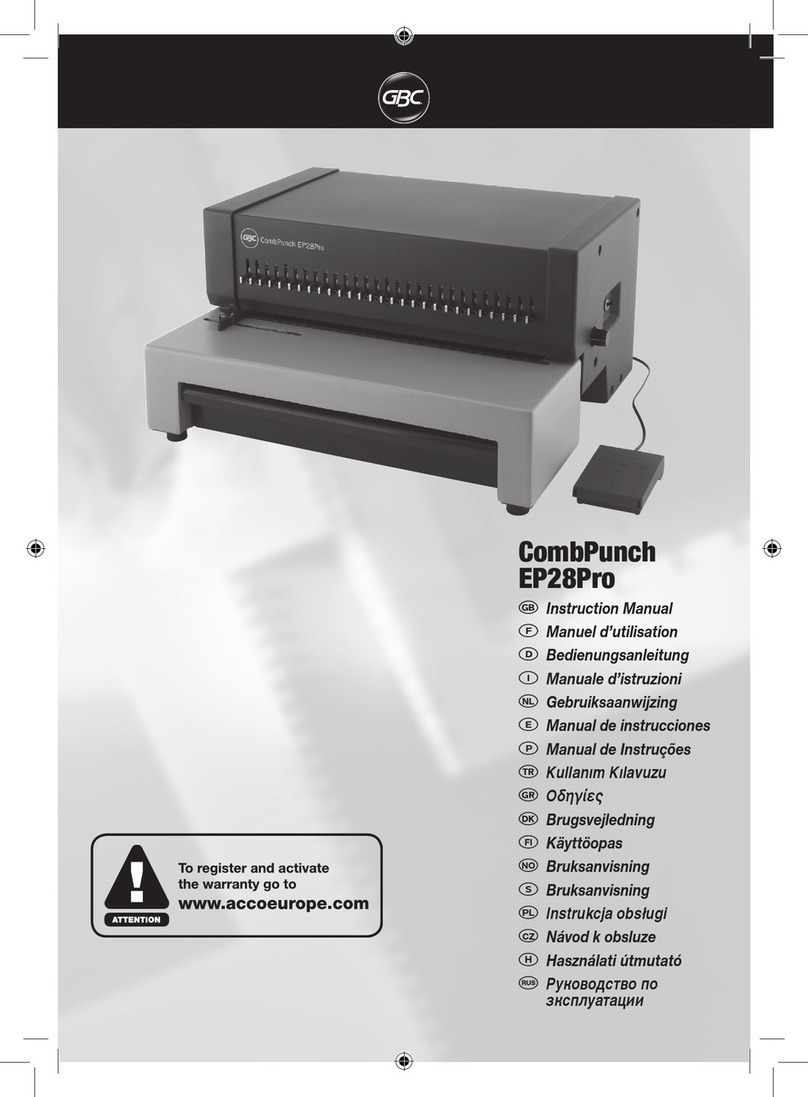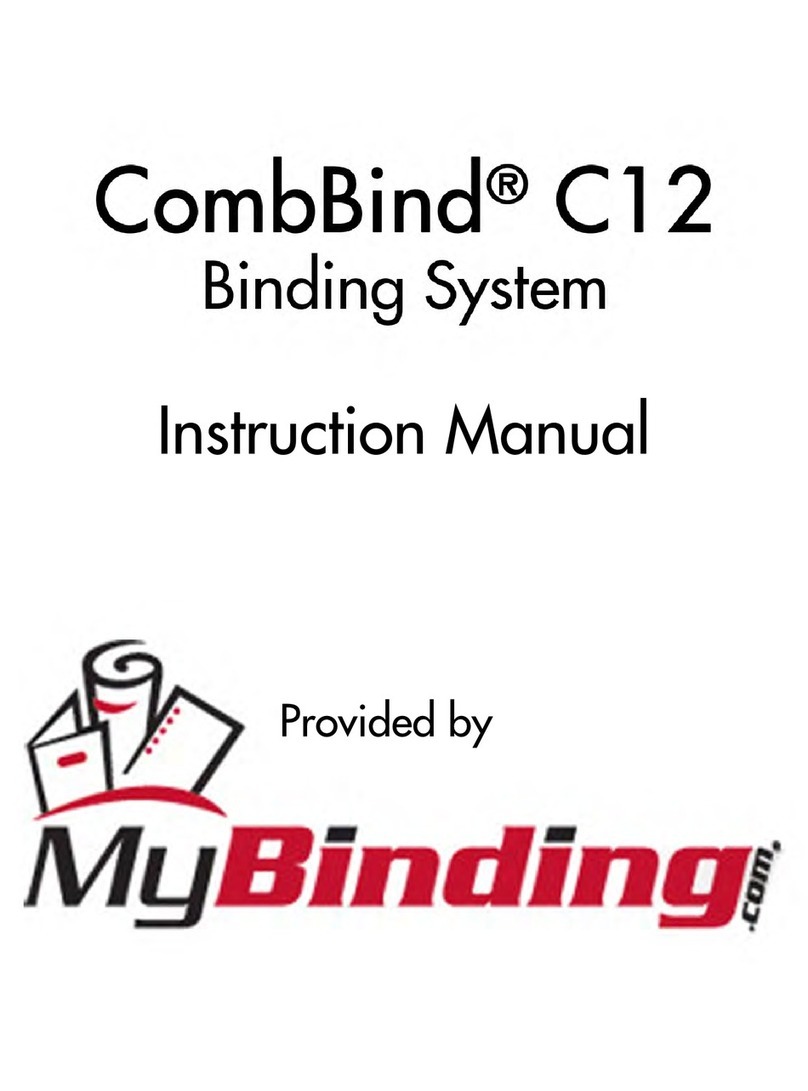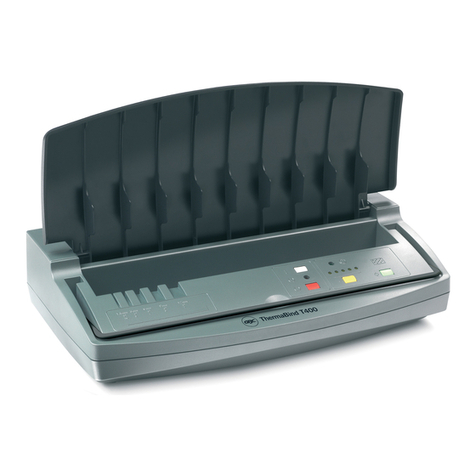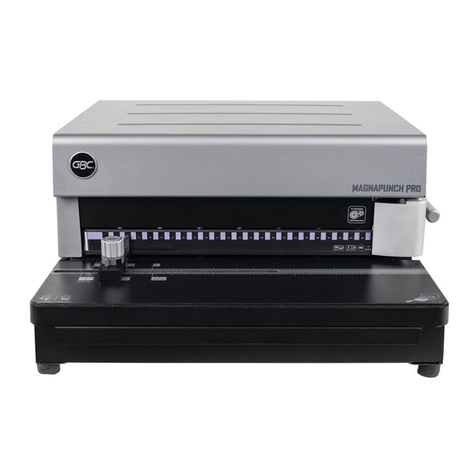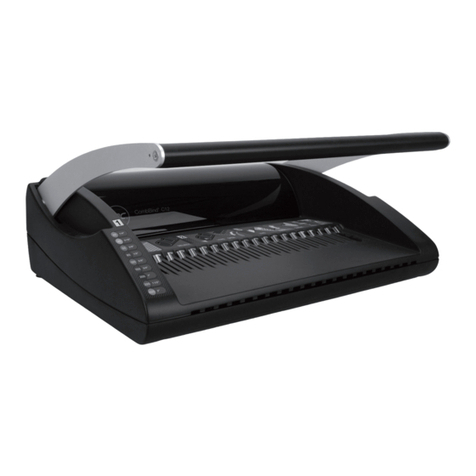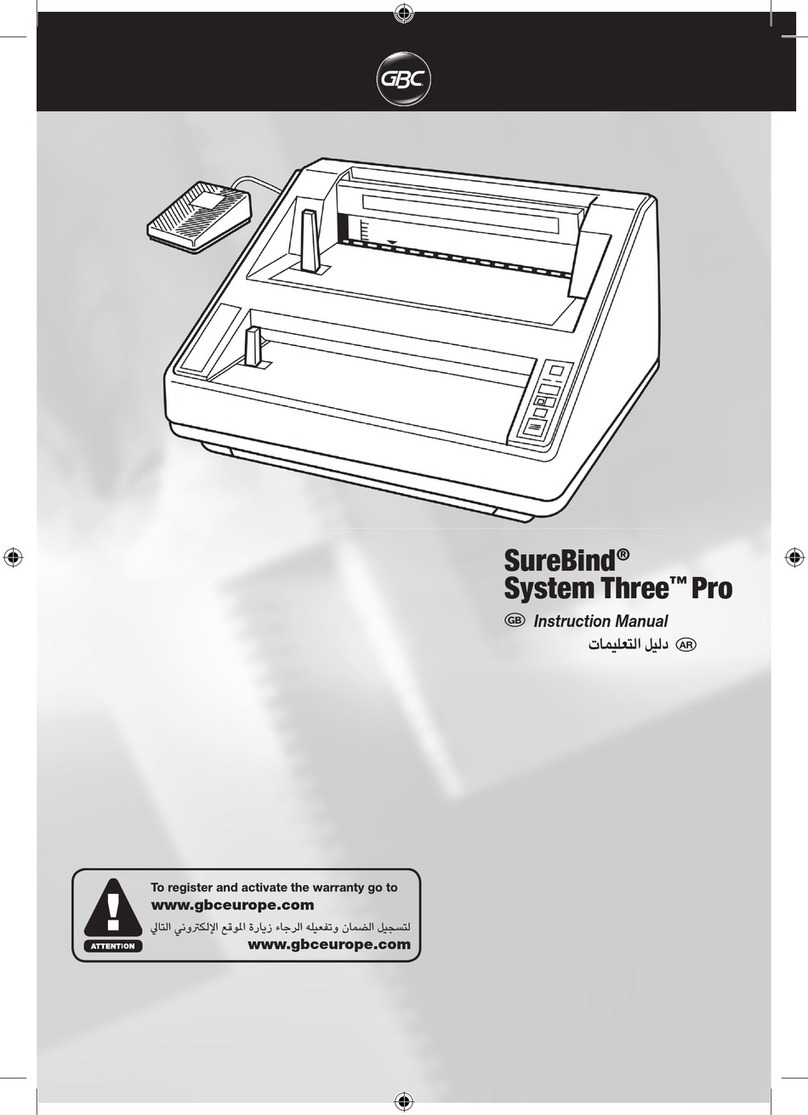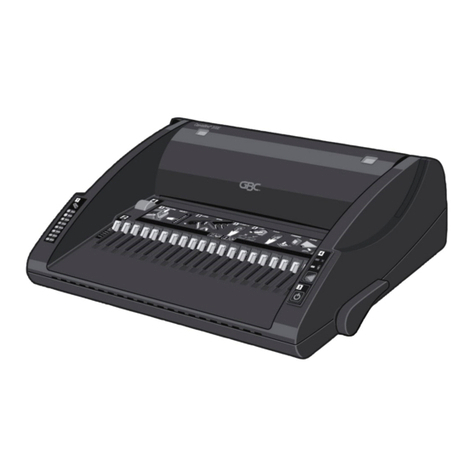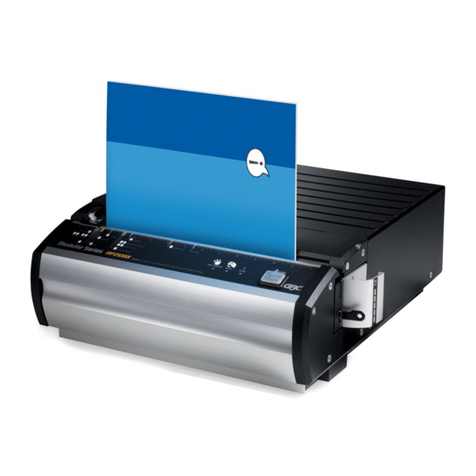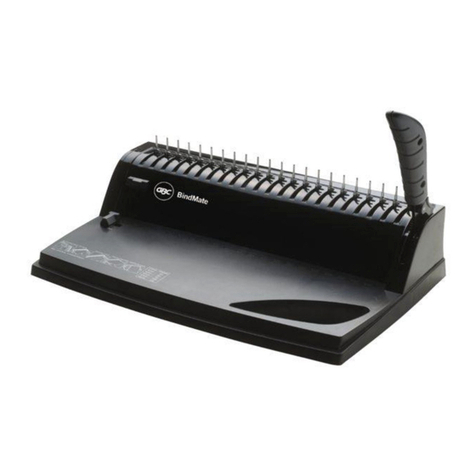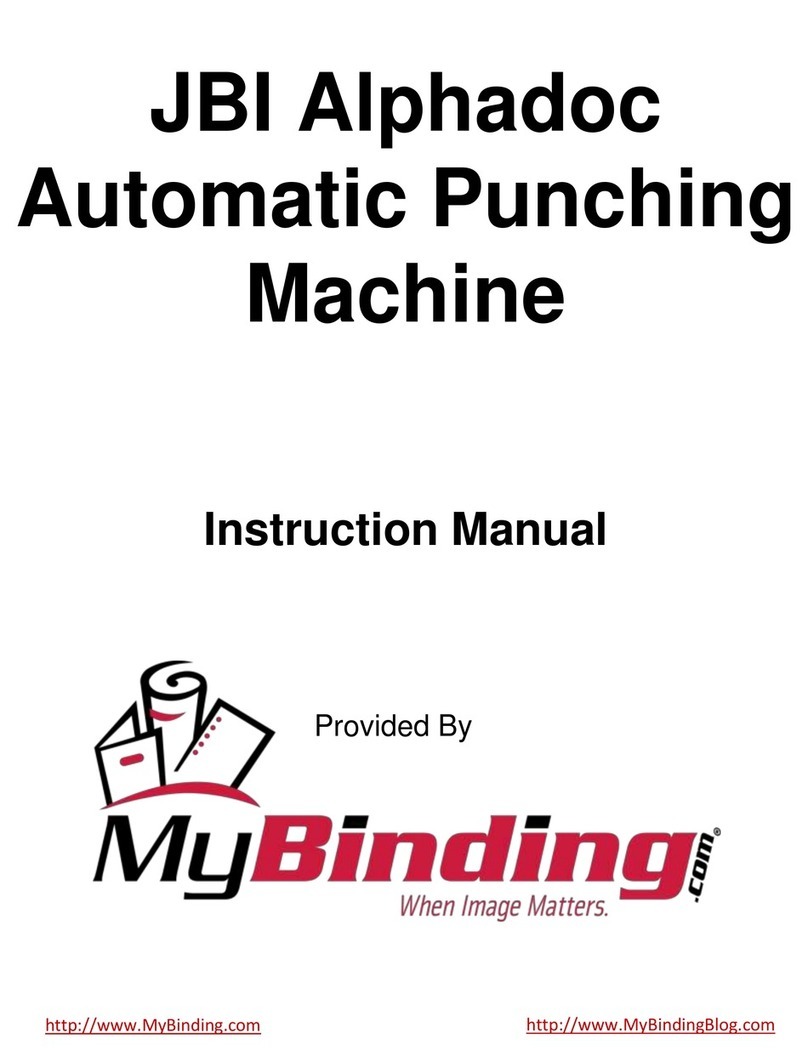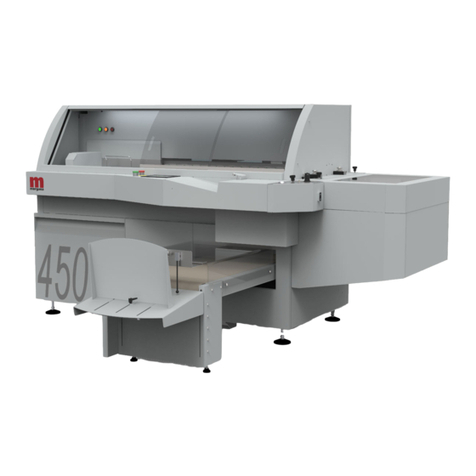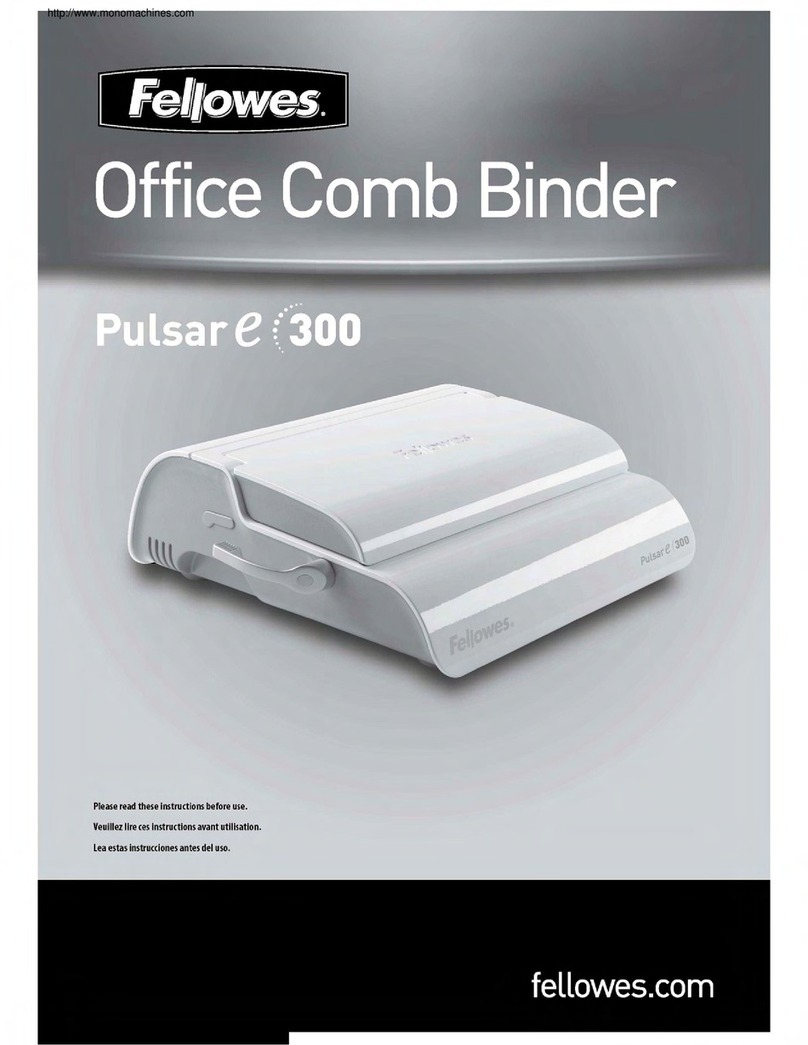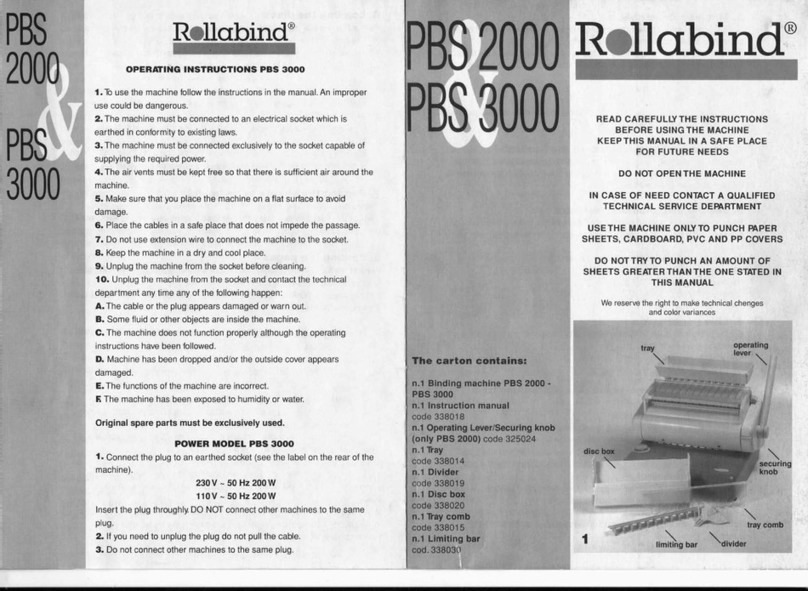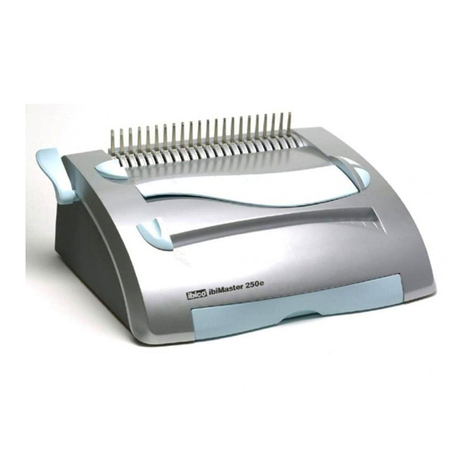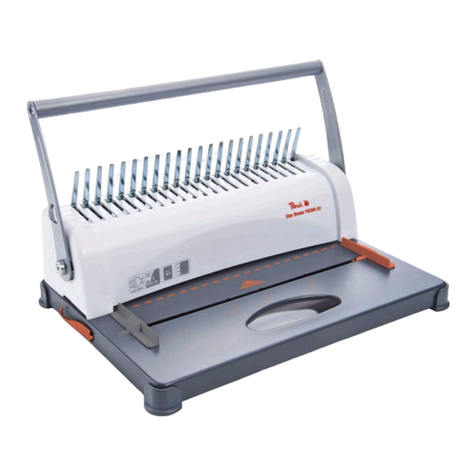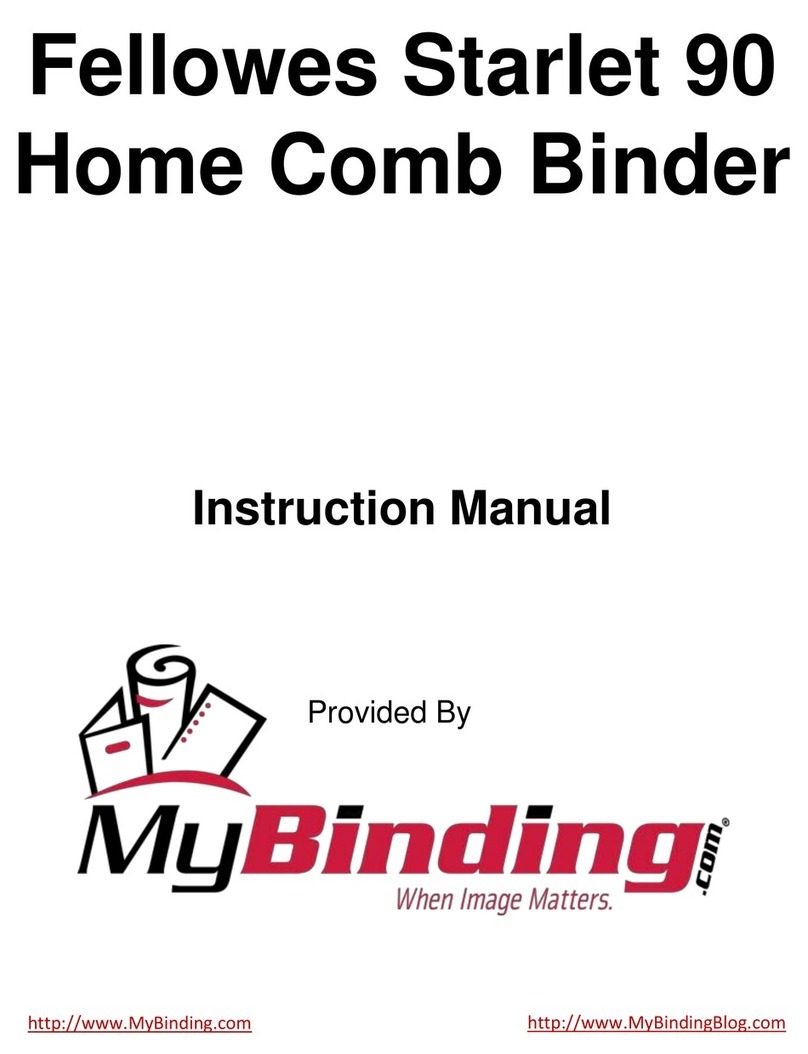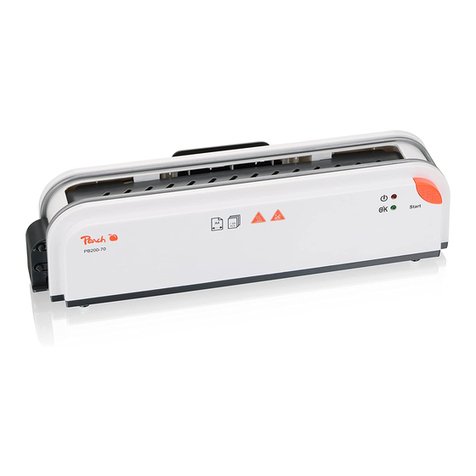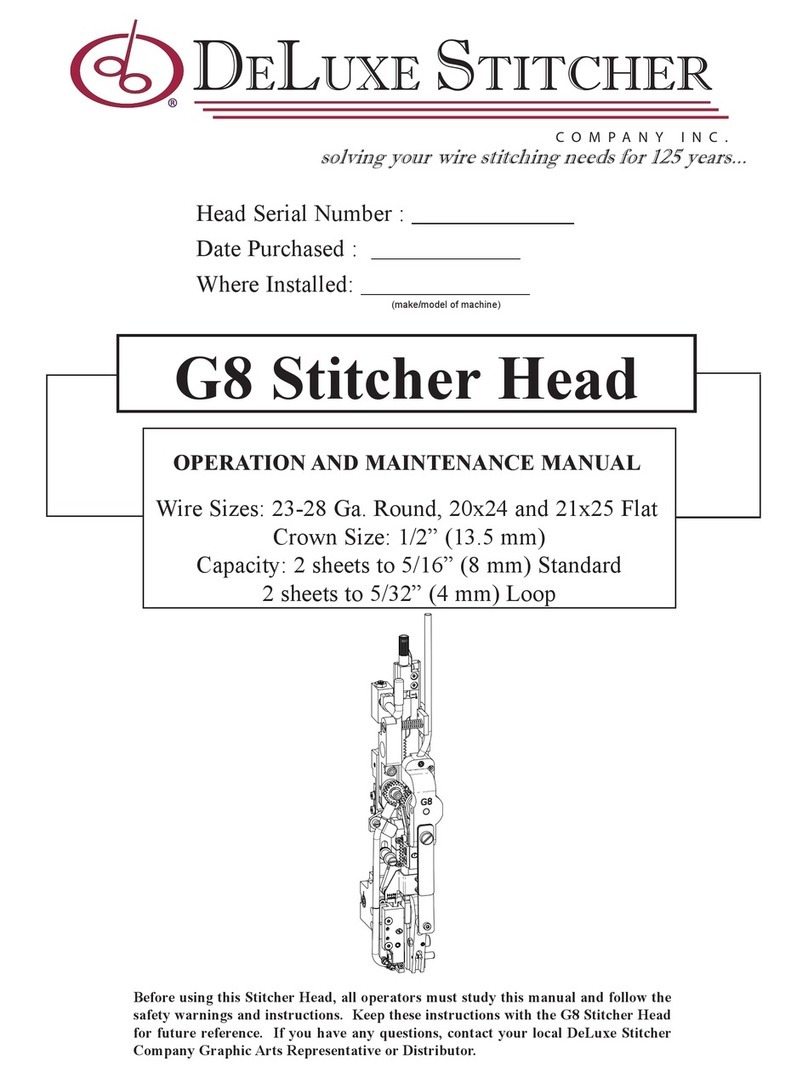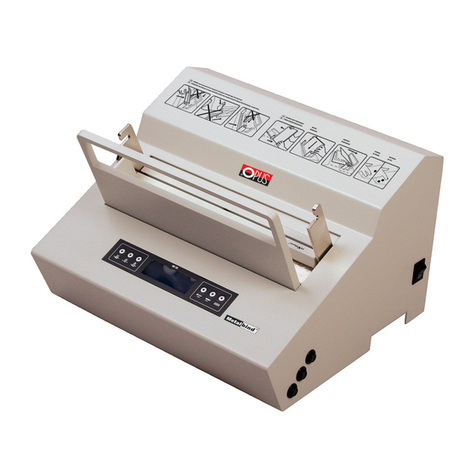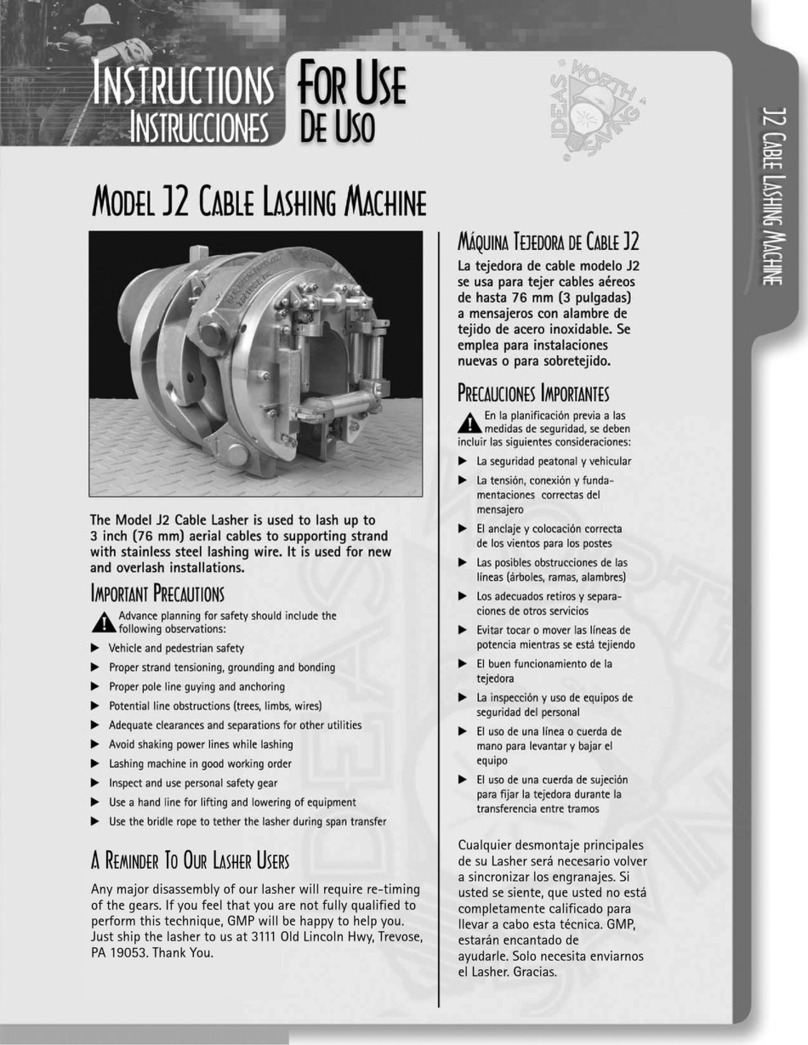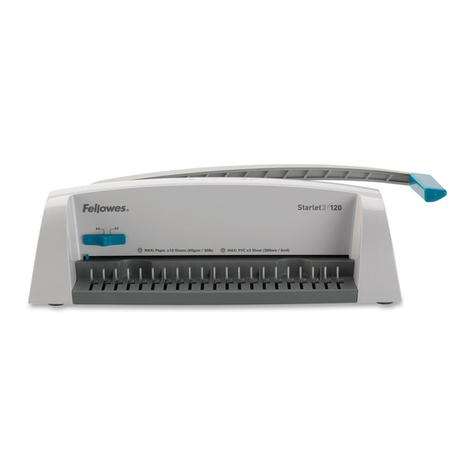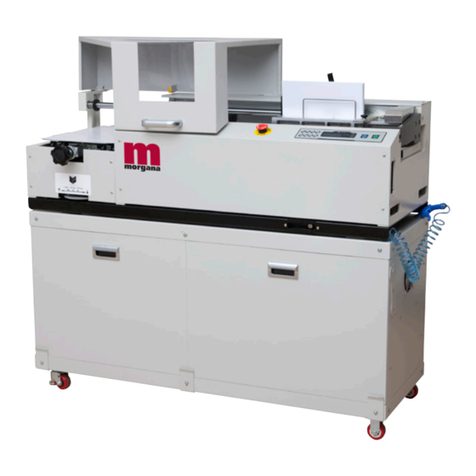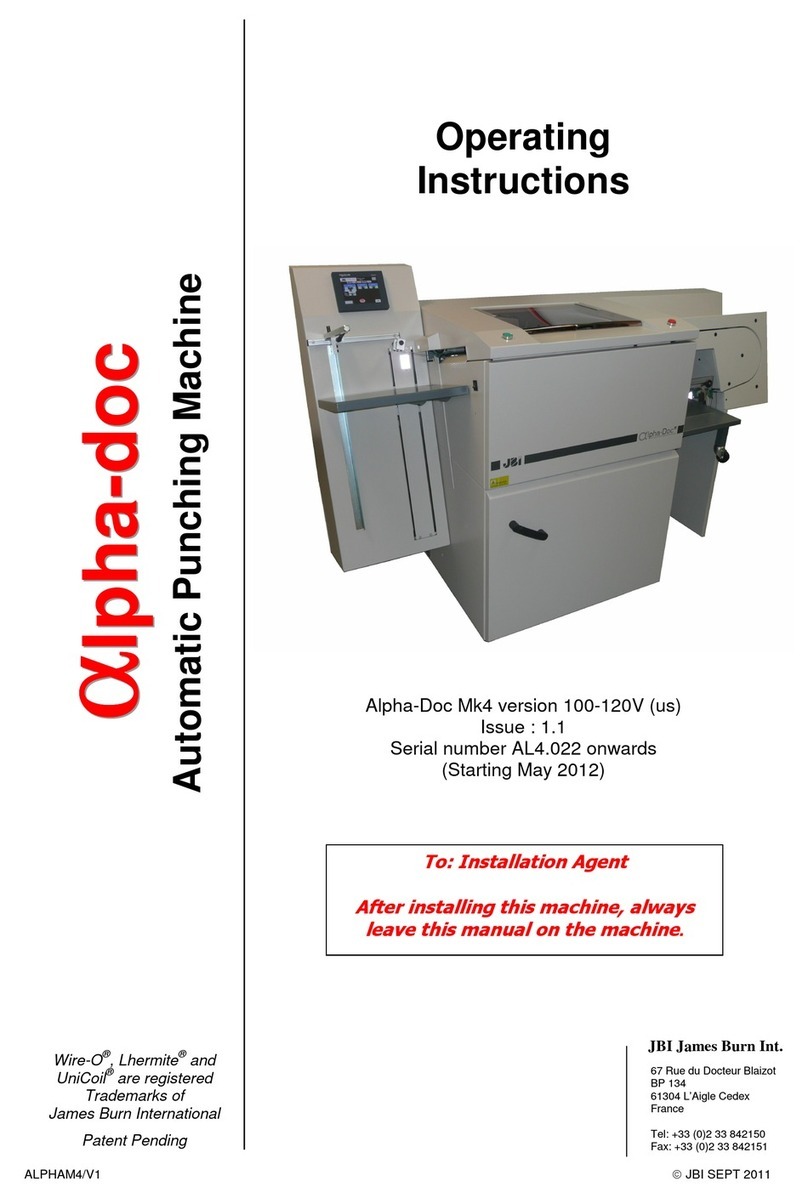8
Consignes de sécurité
VOTRE SÉCURITÉ AINSI QUE CELLE DES AUTRES EST
IMPORTANTE POUR ACCO BRANDS EUROPE. DANS CE MANUEL
D’UTILISATION ET SUR LE PRODUIT, VOUS TROUVEREZ DES
MESSAGES DE SÉCURITÉ IMPORTANTS. MERCI DE LES LIRE
TRÈS ATTENTIVEMENT.
Veuillez noter que votre MultiBind 420 a été conçue
exclusivement pour la perforation et la reliure de feuilles de
papier et de couvertures en plastique PVC. Ne l’utilisez pas à
d’autres fins, ni avec d’autres matériels. Vous assurerez ainsi un
long cycle de vie à votre perforelieuse et éviterez tout dommage
mécanique.
• Pour éviter de surcharger votre machine, veuillez vérifier le
guide de perforation maximum qui se trouve à l’avant de
l’appareil avant de perforer.
• Lorsque vous perforez des couvertures en PVC/PP, nous vous
recommandons de glisser la couverture entre deux feuilles de
papier avant de la perforer.
• NE PERFOREZ PAS d’objets métalliques comme des agrafes ou
des trombones.
• Veuillez vider régulièrement le tiroir à confettis.
• Assurez-vous que la machine est utilisée sur une surface plane
et stable.
• Ne soulevez jamais la machine par la poignée de perforation.
Utilisez toujours les poignées situées sur le côté de la machine.
• Pour éviter les risques de blessure, NE METTEZ PAS vos doigts
dans la voie de reliure métallique.
• La machine ne doit pas être exposé à des conditions
d’humidité / de température susceptibles de provoquer de la
condensation. Température ambiante maximale ~ 40º C
m
Notification spéciale
Merci d’avoir choisi une thermorelieuse GBC. Nous visons
à produire des machines de qualité à un prix abordable et
offrons de nombreuses fonctions sophistiquées garantissant
d’excellents résultats à chaque usage. Avant d’utiliser votre
machine pour la première fois, veuillez prendre quelques
minutes pour lire attentivement ce guide.
Emplacement des
pièces et commandes
1
Bouton de verrouillage de peigne
(plastique/métal)
2
Loquets de protection
3
Butée papier réglable (perforation à 34 trous)
4
Butée papier réglable (perforation à 21 trous)
5
Porte-document
6
Poignée de perforation
7
Poinçons débrayables
8
Indicateur de diamètre peigne (dans la fente
de perforation)
9
Mécanisme d’ouverture/de fermeture de
peignes plastiques
J
Fente de reliure peigne métal
K
Levier de reliure
L
Support de peigne métal
M
Fente de perforation (34 trous ronds, pas 3:1)
N
Fente de perforation (21 trous rectangulaires,
pas américain)
O
Bac à confettis
Cet appareil peut faire l’objet de modifications techniques sans préavis.
Spécifications
Mode d’opération
Taille de document maxi
Nombre de poinçons rectangulaires
Nombre de poinçons ronds
Espace entre trous rectangulaires
Espace entre trous ronds
Capacité de perforation – papier
Capacité de perforation – couvertures plastique PVC
Vitesse de perforation
Butée papier
Diamètre maxi, peigne plastique
Diamètre maxi, peigne métal/Click
Vitesse de reliure, peigne plastique
Vitesse de reliure, peigne métal/Click
Bac à confettis
Poids net
Dimensions
GBC MultiBind 420
Manuel
315 mm (papier informatique)
21 (dont 7 individuellement débrayables)
34
14,2 mm, pas américain
8,5 mm, pas 3:1
20 feuilles de 80 g/m² maxi
2 couvertures PVC de 0,2 mm chacune maxi
Environ 5000 feuilles par heure
Réglable et verrouillable
51 mm
14 mm
300 reliures par heure
180 reliures par heure
334 x 29 x 117 mm
11,5 kg
125 x 425 x 425 mm
Conseils d’utilisation
Les poinçons de perforation de votre MultiBind 420 ont été
revêtus d’huile pendant la fabrication afin de les protéger
contre la corrosion et d’assurer leur fonctionnement en toute
aise.
• Avant la première utilisation de l’appareil, nous vous
conseillons d’effectuer plusieurs opérations de perforation à
l’aide de feuilles de brouillon afin d’enlever toute trace d’huile
des poinçons.
• Testez le système de perforation à l’aide de feuilles de
brouillon avant de perforer votre document final.
• Utilisez uniquement des accessoires GBC.
L’appareil ne nécessite aucune maintenance lorsqu’il est utilisé
correctement et uniquement aux fins prévues.
